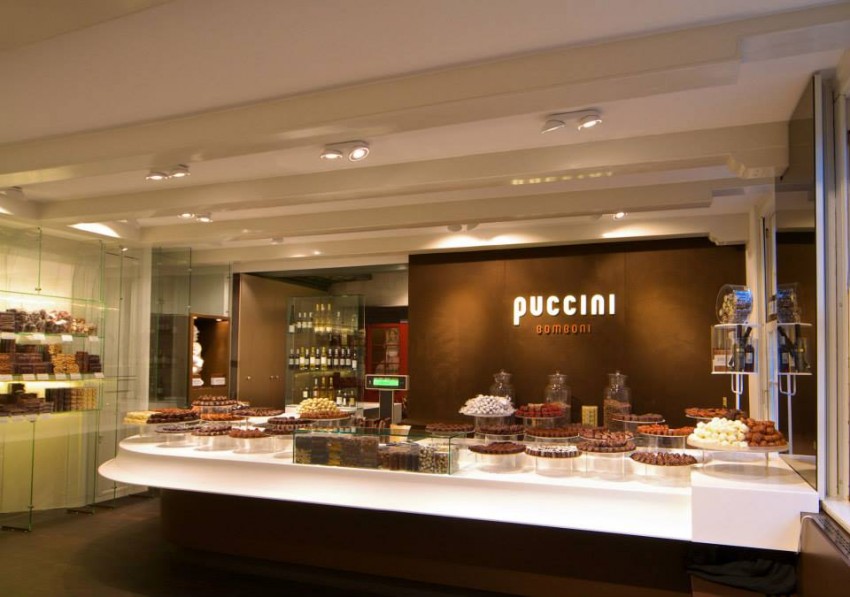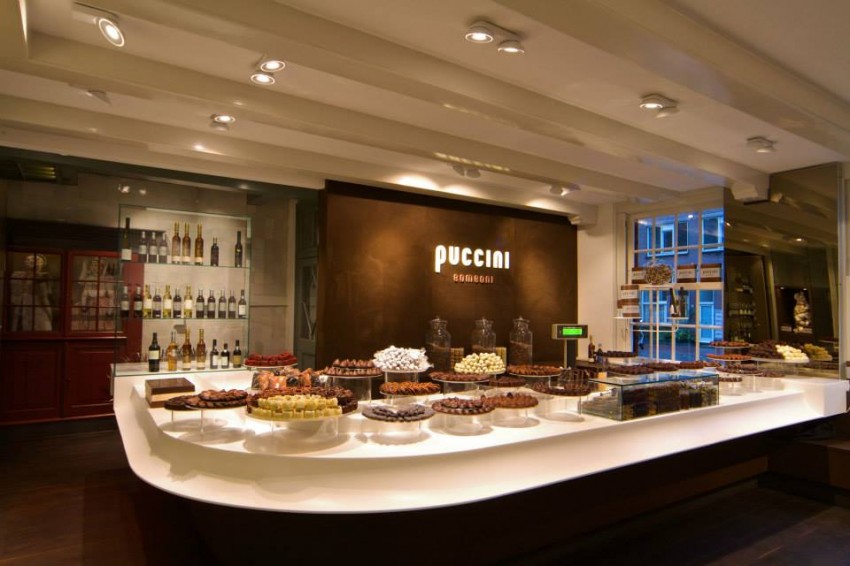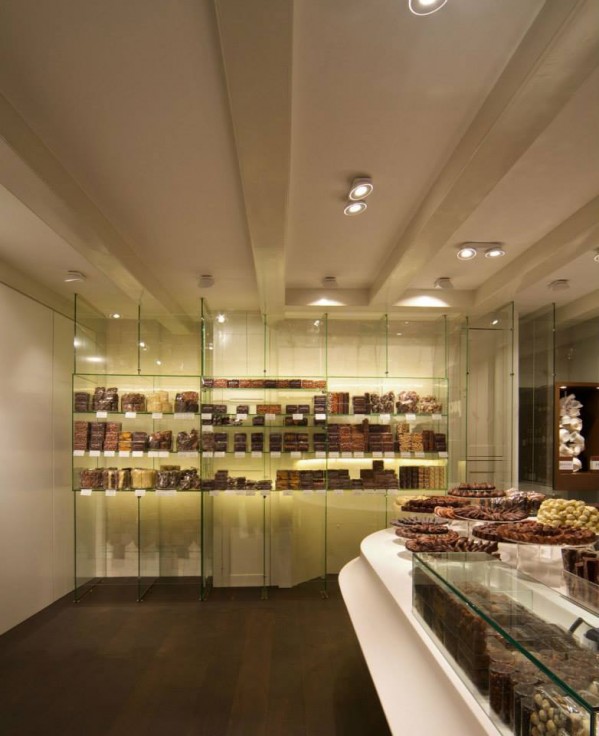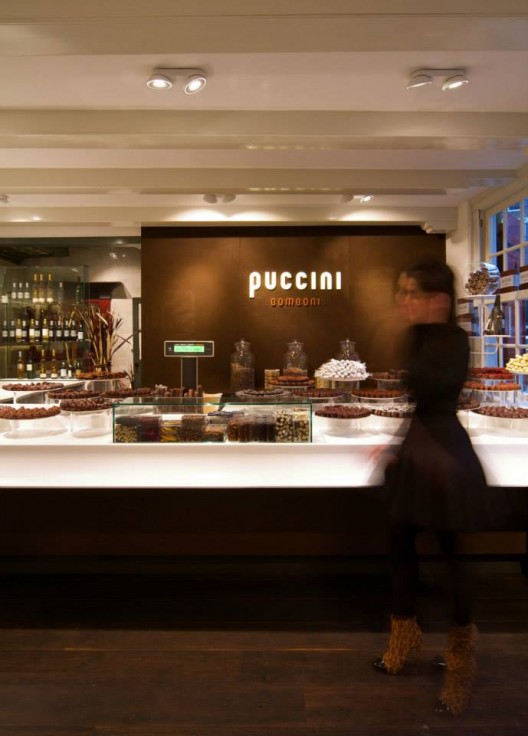Puccini Bomboni Amsterdam
7.2.2014Housed in an historic church and featuring the Tweeter On by Delta Light, the new Puccini Bomboni store in Amsterdam has been designed by .Day with lighting design in conjunction with Delta Light.






Housed in an historic church and featuring the Tweeter On by Delta Light, the new Puccini Bomboni store in Amsterdam has been designed by .Day with lighting design in conjunction with Delta Light.






The Slip House by Carl Turner Architects is the 2013 RIBA Manser Medal winner for best new UK house, featuring Ultra Twin AD track spot lights by Delta Light.
Occupying one of four plots forming a gap in a typical Brixton terrace, Slip House constitutes a new prototype for adaptable terraced housing. Three simple ‘slipped’ orthogonal box forms break up the bulk of the building and give it it’s striking sculptural quality.

The top floor is clad in milky, translucent glass planks, which continue past the roof deck to create a high level ‘sky garden’. Designed to Code for Sustainable Homes Level 5, it features ‘energy piles’ utilising a solar assisted ground source heat pump creating a thermal store beneath the building. PV’s, a wildflower roof, rain water harvesting, reduced water consumption, mechanical ventilation with heat recovery within an airtight envelope with massive levels of insulation make this one of the most energy efficient houses built in the UK. A prototype brownfield development offering dense, flexible, urban living – the house is a vehicle for in-house research into sustainable design, seamlessly integrating the often conflicting aesthetic requirements of architecture and alternative low energy systems. We are working to develop this model for multiple developments and as affordable housing.

Living and working (‘Living over the shop’) is something that really interests us. We see a prototype new ‘terraced’ house, squeezed into under-utilised city (Brownfield) sites. This flexible type of home can allow for the artisan or home-worker to sub-let or downsize. This can enliven local communities and produce ‘homes’ which create opportunities rather than be dormitories or financial assets. Slip House is flexible and can be used as a single home, studio workspace and apartment, or two apartments.
The perimeter walls are load bearing, freeing up the internal areas of supporting columns or additional load bearing walls. The house’s open-plan layout ensures that walls / dividers are simple to erect and require minimal construction effort. This aspect of Slip House is not only financially sustainable but also environmentally so, as it helps to ensure the permanence of the overall structure, as minimal modifications can allow the house to adapt to changing lives and living situations indefinitely.

Our approach was to model the building as a series of simple orthogonal box forms that use the full width of the site. This allows future buildings to simply adjoin the flank walls.

The house takes the idea of three slipped boxes. The boxes are carefully placed to maximise light and outlook from inside while not intruding on neighbour’s outlook. The shifting planes also break up the bulk of the building and give it its sculptural quality.



Nixon Tulloch Fortey Architecture makes the most of a prominent site, configuring a house that is private yet engages the community. Featured: Deep Starr down lighters by Inlite.
From the tram window, some two hundred metres deep into a suburban Melbourne estate of Californian bungalows, you can see a folded black zinc skin creeping over the gable ridge of House by the Park and hovering above it in parallel, as if attempting to swallow it whole.
On arrival at the house, two things are made clear. Given the mid-morning strollers, dog walkers, pram-pushing grandparents and street-side discussions, it is clear this community is visible and engaged. And as the name of the house suggests, it is in the bordering parkland and wooded reserve that the appeal of this site lies.
The modern form of House by the Park, prominently located at the corner junction of park, trail and street, proved relatively divisive for the architects. Brett Nixon of Nixon Tulloch Fortey (NTF) Architecture explains that while initial plans aimed to retain more of the existing single-storey bungalow than its double-fronted facade, the brief ultimately required a two-storey volume with substantial reconfiguration of the ground floor.
NTF took care to appropriately proportion and compose the transition between old and new, to ensure that the extension was considered as such, and that the bungalow retained its place among the heritage streetscape. While the house has a distinctly different architectural language from front to back, the initial material departure in black zinc cladding is comparatively recessive and serves to bind the original with the addition. Weatherboards on the original bungalow were extended to clad a portion of the new volume, returning depth to the existing facade to prevent it from appearing subservient or “clipped on.”

The new form extends west towards the reserve in alignment with the original footprint, while a sizeable decked courtyard opens out the plan to capture the northern sun. Suspended some distance from the stacked glazed living spaces, a surprisingly solid wall of vertical timber battens shades the interior, compulsorily screens views, and offers a relatively dynamic sense of cantilevered tension and void. The rhythmic striation of the screen battens recurs in seamed black zinc cladding and silvertop ash siding, enclosing balcony roof battens and adjacent weatherboards to add pattern and welcome detail.

Engagement with the neighbourhood was a key motivation for the clients, who when at home literally keep their door open as a standing invitation to passing friends. Their home is placed to be a community focal point and resource for film nights or gatherings in the park. This openness is ever apparent, and unfolds with a high level of transparency between outside and in, and throughout the interior spaces. From the living areas a single panorama may include several or all of the following: street beyond the open front door; park trail beyond unscreened boundary windows; sky through roof lights or clasped between house and hovering screen; and trees, incidentally observed through uncontrived gaps and apertures. Spacious planning and clean lines present little distraction from these vistas.

With a neutral palette of American oak, crisp white surfaces and stained timber, interior detailing has been kept simple. Recessed skirting boards and architraves are mounted flush with the walls, ceilings are kept lofty and square set, and doors are stretched to their full height. Over the stair the ceiling folds to reflect the intersection of the new roof pitch and gable end, contrasting timber panelling with plasterboard to highlight this juncture.

On the upper floor, a mid-flight switch from timber to carpet acoustically shifts the focus back beyond the now-muted architecture and towards the sound of the trees. This aptly dedicated children’s domain is, at least in this moment, truly restful.
From within the generous circulation zone in the centre of the upper plan, the elongated gap between screen and exterior wall allows a visual connection to the lower level, no doubt providing a sense of security through transparency for the client’s young children. It is easy to imagine how the kids’ playspace and west-facing balcony deck may be dynamically occupied depending on the time of day. Acting effectively as a sundial, the screen casts a shadow across the floor plate that wanes in the late afternoon, drawing attention outward to the balcony and view of the parkland or setting sun beyond.
An unassuming remnant corrugated iron shed at the rear of the site appears almost rural against the deep wooded backdrop. The shed at first seems out of place, but the discovery of its interior transformation by NTF into a soundproofed music studio offers a new sense of value and uncomplicated charm. While perhaps detracting from the “image” of architecture, the clients – one of them a professional musician – enjoy this contrast, which contributes to a feeling of being elsewhere despite the immediate suburban proximity.
House by the Park makes use of its uncommonly idyllic surrounds, becoming an architectural lens through which borrowed landscape and neighbourhood engagement is given precedence over a rigorous defence of privacy.
Words by Bonnie Herring
Images by Peter Clarke